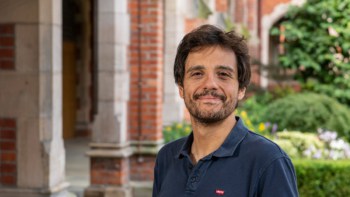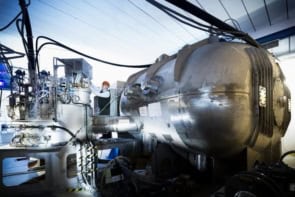Highly charged ions produce immense electrical fields that can disrupt the fundamental electrical structure of space itself. The theory of quantum electrodynamics (QED) describes this effect in detail and predicts the resulting shifts that should occur in the wavelengths of light that atoms emit. But a new kind of QED promises to probe these ions very precisely – and without a photon in sight.
Perhaps they’re just shy, but heavy atoms seem very embarrassed when most of their electrons are stripped off. In order to cover their nakedness as quickly as possible, they aggressively try to steal electrons from any source they encounter. Indeed, their electron-capture rates can be orders of magnitude higher than those of ordinary ions. As a result, they offer interesting opportunities to study the influence of extreme electric fields on a variety of physical processes.
The strongest static electric fields that can be studied in the laboratory are those produced by highly charged ions. These fields can approach 1016 V cm-1, nearly 300 billion times larger than the electrical breakdown threshold of air. Such fields can change the electrical structure of space, an effect described by induce quantum electrodynamics (QED).
Until recently, virtually everything we knew about QED effects in atoms was obtained using high-resolution photon spectroscopy. But now Reinhold Schuch and co-workers at Stockholm University have demonstrated that QED effects in highly charged ions can be measured to very high accuracy without detecting any photons, let alone measuring them precisely (E Lindroth et al. 2001 Phys. Rev. Lett. 86 5027).
In the August issue of Physics World, John Gillaspy of the National Institute of Standards and Technology, USA, describes the new technique.



